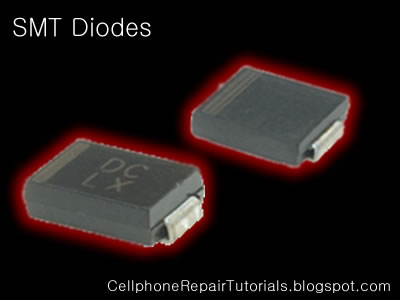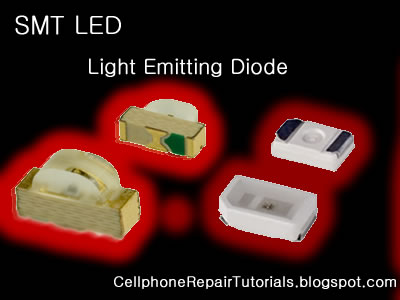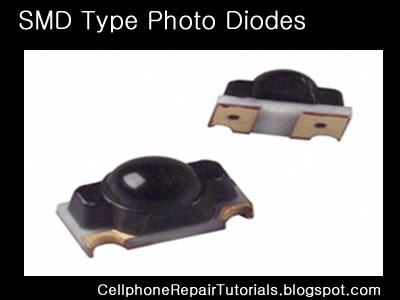·
Firmware
·
All Samsung
·
Block Diagram
·
Install
·
Electrical Schematic
In electronics,
a diode is a two-terminal electronic
component that conducts electric current in only one direction. The term usually refers
to a semiconductor diode, the most common type today, which is a crystal
of semiconductor connected to two electrical terminals, a P-N junction. A vacuum tube diode, now little used, is a vacuum tube with two electrodes; a plate and a cathode.
The most common function of a diode is to allow an electric current in one direction (called the diode's forward direction) while blocking current in the opposite direction (the reverse direction). Thus, the diode can be thought of as an electronic version of a check valve. This unidirectional behavior is called rectification, and is used to convert alternating current to direct current, and extract modulation from radio signals in radio receivers.
However, diodes can have more complicated behavior than this simple on-off action, due to their complex non-linear electrical characteristics, which can be tailored by varying the construction of their P-N junction. These are exploited in special purpose diodes that perform many different functions. Diodes are used to regulate voltage (Zener diodes), electronically tune radio and TV receivers (varactor diodes), generate radio frequency oscillations (tunnel diodes), and produce light (light emitting diodes).
Diodes were the first semiconductor electronic devices. The discovery of crystals' rectifying abilities was made by German physicist Ferdinand Braun in 1874. The first semiconductor diodes, called cat's whisker diodes were made of crystals of minerals such as galena. Today most diodes are made of silicon, but other semiconductors such as germanium are sometimes used.
The most common function of a diode is to allow an electric current in one direction (called the diode's forward direction) while blocking current in the opposite direction (the reverse direction). Thus, the diode can be thought of as an electronic version of a check valve. This unidirectional behavior is called rectification, and is used to convert alternating current to direct current, and extract modulation from radio signals in radio receivers.
However, diodes can have more complicated behavior than this simple on-off action, due to their complex non-linear electrical characteristics, which can be tailored by varying the construction of their P-N junction. These are exploited in special purpose diodes that perform many different functions. Diodes are used to regulate voltage (Zener diodes), electronically tune radio and TV receivers (varactor diodes), generate radio frequency oscillations (tunnel diodes), and produce light (light emitting diodes).
Diodes were the first semiconductor electronic devices. The discovery of crystals' rectifying abilities was made by German physicist Ferdinand Braun in 1874. The first semiconductor diodes, called cat's whisker diodes were made of crystals of minerals such as galena. Today most diodes are made of silicon, but other semiconductors such as germanium are sometimes used.

Types of semiconductor diode in Mobile Phones Circuit
Diodes that can be made to conduct backwards. This
effect, called Zener breakdown, occurs at a precisely defined voltage, allowing
the diode to be used as a precision voltage reference. In practical voltage
reference circuits Zener and switching diodes are connected in series and opposite directions
to balance the temperature coefficient to near zero. Some devices labeled as
high-voltage Zener diodes are actually avalanche diodes (see above). Two (equivalent) Zeners in series
and in reverse order, in the same package, constitute a transient absorber (or Transorb,
a registered trademark). The Zener diode is named for Dr. Clarence Melvin Zener of Southern Illinois University, inventor of the device.

In a diode formed from a direct band-gap semiconductor, such as gallium arsenide,
carriers that cross the junction emit photons when they recombine with the majority carrier on
the other side. Depending on the material, wavelengths (or colors) from the infrared to the near ultraviolet may be produced. The forward potential of these diodes depends on the wavelength of the emitted
photons: 1.2 V corresponds to red, 2.4 V to violet. The first LEDs
were red and yellow, and higher-frequency diodes have been developed over time. All LEDs produce
incoherent, narrow-spectrum light; “white” LEDs are actually combinations of
three LEDs of a different color, or a blue LED with a yellow scintillator coating. LEDs can also be used as low-efficiency
photodiodes in signal applications. An LED may be paired with a photodiode or
phototransistor in the same package, to form an opto-isolator.

All semiconductors are subject to optical charge carrier generation. This is typically an undesired
effect, so most semiconductors are packaged in light blocking material.
Photodiodes are intended to sense light(photodetector), so
they are packaged in materials that allow light to pass, and are usually PIN
(the kind of diode most sensitive to light). A photodiode can be used in solar
cells, in photometry,
or in optical communications. Multiple photodiodes may be
packaged in a single device, either as a linear array or as a two-dimensional
array. These arrays should not be confused with charge-coupled devices.

No comments:
Post a Comment